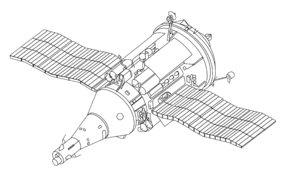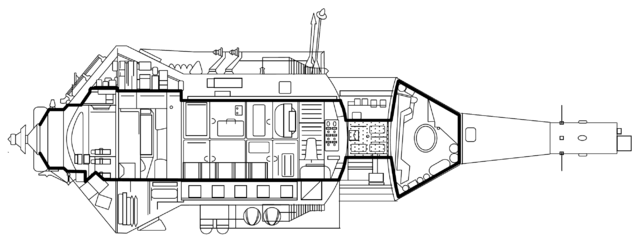Sakigake | Kosmos 1616 | Kosmos 1617
· Kosmos 1618
· Kosmos 1619
· Kosmos 1620
· Kosmos 1621
· Kosmos 1622 | Molniya-3 No.36 | Kosmos 1623 | Kosmos 1624 | Gorizont No.21L | Kosmos 1625 | Kosmos 1626 |
STS-51-C (USA-8) | Kosmos 1627 | Kosmos 1628 | Meteor-2 No.13 | USA-9 | Arabsat 1A
· Brasilsat A1 |
Kosmos 1629 | Kosmos 1630 | Kosmos 1631 | Kosmos 1632 | Kosmos 1633 |
Geosat | Kosmos 1634 | Kosmos 1635
· Kosmos 1636
· Kosmos 1637
· Kosmos 1638
· Kosmos 1639
· Kosmos 1640
· Kosmos 1641
· Kosmos 1642 | Ekran No.28L | Intelsat VA F-10 | Kosmos 1643 | Kosmos 1644 |
STS-51-D (Anik C1
· Leasat 3) |
Unnamed | Kosmos 1645 | Kosmos 1646 | Kosmos 1647 | Kosmos 1648 | Prognoz 10 |
STS-51-B (Nusat) | GStar-1
· Telecom 1B | Kosmos 1649 | Kosmos 1650
· Kosmos 1651
· Kosmos 1652 | Kosmos 1653 | Kosmos 1654 | Molniya-3 No.39 | Kosmos 1655 | Kosmos 1656 |
Soyuz T-13 | Kosmos 1657 |
Kosmos 1658 | Kosmos 1659 | Kosmos 1660 |
STS-51-G (Morelos 1
· Arabsat-1B · Telstar 3D
· SPARTAN-101) |
Kosmos 1661 | Kosmos 1662 | Progress 24 | Kosmos 1663 | Unnamed | Kosmos 1664 | Intelsat VA F-11 |
Giotto | Kosmos 1665 | Kosmos 1666 |
Kosmos 1667 | Kosmos 1668 | Molniya-3 No.37 |
Kosmos 1669 |
STS-51-F (PDP) | Kosmos 1670 | Kosmos 1671 | Transit-O 24
· Transit-O 30 | Kosmos 1672
· Kosmos 1672 | Kosmos 1673 | Kosmos 1674 | Gran' No.26L |
Kosmos 1675 | Kosmos 1676 |
Suisei | Molniya-1 No.61 | Kosmos 1677 |
STS-51-I (Aussat A1
· ASC-1
· Leasat 4) |
Unnamed | Kosmos 1678 | Kosmos 1679 | Kosmos 1680 | Kosmos 1681 |
ECS-3 · Spacenet 3 |
Soyuz T-14 | Kosmos 1682 | Kosmos 1683 |
Kosmos 1684 | Kosmos 1685 |
Kosmos 1686 | Intelsat VA F-12 |
Kosmos 1687 | Kosmos 1688 | Kosmos 1689 | Molniya-3 No.38 |
STS-51-J (USA-11
· USA-12) |
USA-10 | Kosmos 1690
· Kosmos 1695
· Kosmos 1692
· Kosmos 1693
· Kosmos 1694
· Kosmos 1691 | Kosmos 1696 | Fanhui Shi Weixing 8 | Kosmos 1697 |
Kosmos 1698 | Molniya-1 No.73 |
Unnamed | Meteor-3 No.2 | Kosmos 1699 | Kosmos 1700 | Molniya-1 No.56 |
STS-61-A (GLOMR) |
Kosmos 1701 | Kosmos 1702 | Gran' No.28L | Kosmos 1703 |
STS-61-B (Morelos 2
· Aussat A2
· Satcom K2
· OEX
· EASE/ACCESS) | Kosmos 1704 | Kosmos 1705 | Kosmos 1706 | Kosmos 1707 | USA-13
· USA-14 | Kosmos 1708 | Kosmos 1709 | Molniya-3 No.40 | Kosmos 1710
· Kosmos 1711
· Kosmos 1712 | Meteor-2 No.14 | Kosmos 1713 | Kosmos 1714




